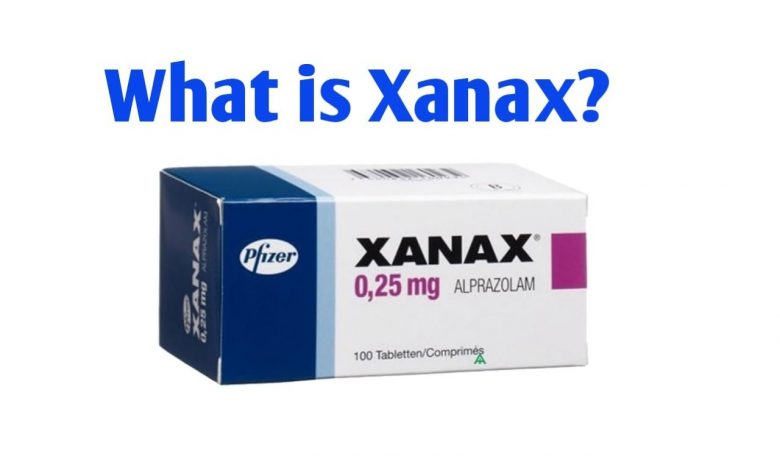Xanax: Uses, When to Take, Side Effects, Addiction

What is Xanax?
Xanax is the brand name for Pfizer’s brand of Alprazolam, a short-acting tranquilizer of the benzodiazepine class. Xanax is marketed by Pfizer an American multinational pharmaceutical and biotechnology corporation headquartered in Manhattan, New York City.
Xanax works by decreasing abnormal excitement in the brain. The Food and Drug Administration (FDA) approved it in October 1981. Benzodiazepines act on the brain and central nervous system (CNS) to produce a calming effect. Xanax is a federally controlled substance (C-IV) because it can be abused or lead to dependence. Keep this medicine in a safe place to prevent misuse and abuse. Selling or giving away Xanax may harm others, and is against the law. Tell your healthcare provider if you have abused or been dependent on alcohol, prescription medicines, or street drugs.
What does Xanax do?
Xanax slows down the movement of brain chemicals that may have become unbalanced, resulting in a reduction in nervous tension and anxiety. Xanax works by boosting the effects of a natural chemical called gamma-aminobutyric acid, which is made in the brain.
Xanax is used to treat anxiety disorders and anxiety caused by depression. Xanax is also used to treat panic disorders with or without a fear of places and situations that might cause panic, helplessness, or embarrassment (agoraphobia).
It is dangerous to purchase Xanax on the Internet or outside the United States. The sale and distribution of medicines outside the U.S. do not comply with safe-use regulations of the Food and Drug Administration (FDA). These medications may contain dangerous ingredients, or may not be distributed by a licensed pharmacy.
What does Xanax feel like?
Many people who take Xanax recreationally, or without a prescription, describe the feeling as sedating or calming. Unlike some drugs, such as cocaine, that produce a “high” or euphoric feeling, Xanax users describe feeling more relaxed, quiet, and tired. These feelings may lead to falling asleep or passing out for a few hours.
Some people have also reported memory loss or blacking out and not remembering what happened for several hours. Higher doses will have stronger effects.
How long does it take to feel the effects of Xanax?
Xanax is taken by mouth and is readily absorbed into the bloodstream. You should start feeling the effects of Xanax in under an hour. The medication reaches peak concentrations in the bloodstream in one to two hours following ingestion. People who take Xanax will often build up a tolerance. For these people, it may take longer to feel the sedative effects of Xanax or the sedation may not feel as strong.
How long does it take for the effects of Xanax to wear off?
One way to find out how long a drug will last in the body is to measure its half-life. The half-life is the time it takes for half of the drug to be eliminated from the body.
Xanax has an average half-life of roughly 11 hours in healthy adults. In other words, it takes 11 hours for the average healthy person to eliminate half of the dose of Xanax. However, it’s important to note that everyone metabolizes medications differently, so the half-life will vary from person to person. Studies have shown that the half-life of Xanax ranges from 6.3 to 26.9 hours, depending on the person.
It takes several half-lives to fully eliminate a drug. For most people, Xanax will fully clear their body within two to four days. But you will stop “feeling” the sedative effects of Xanax before the drug has actually fully cleared your body. This is why you may be prescribed Xanax up to three times per day.
What are the side effects of Xanax?
Common side effects of Xanax include:
- Drowsiness.
- Tiredness.
- Dizziness.
- Sleep problems (insomnia)
- Memory problems.
- Poor balance or coordination.
- Slurred speech.
- Trouble concentrating.
Why is Xanax abused?
Xanax is commonly abused by those seeking it for its sedative effects. Xanax is especially addictive when misused (taken recreationally or other than as directed). Anyone can become addicted to Xanax. According to the U.S. National Library of Medicine, Xanax use can result in tolerance, addiction, and dependence if taken in large quantities or used for a prolonged period.
Even people who take the medication exactly as prescribed can become addicted to it without realizing it.
What are the symptoms and signs of Xanax abuse?
Physical symptoms may include:
- Feelings of elation.
- Drowsiness.
- Sleeping for extended periods of time.
- Light-headedness.
- Difficulty concentrating.
- Problems with memory.
- Sluggishness.
- Nausea.
- Headache.
Xanax Safety Information
To ensure the safe and effective use of benzodiazepines, doctors will provide the following guidance to anyone with a Xanax prescription:
- People should inform their doctor about any alcohol consumption and any medications they are currently taking, including over-the-counter (OTC) medications. People generally should not consume alcohol while taking benzodiazepines.
- Doctors do not recommend Xanax for use in pregnancy. A person should inform their doctor if they are pregnant, are planning to have a child, or become pregnant while they are taking this medication.
- People should inform their doctor if they are breastfeeding.
- Until a person experiences how Xanax affects them, they should not drive a car or operate heavy or dangerous machinery.
- People should not increase the dosage of Xanax without speaking with a doctor, even if they think that the medication “does not work anymore.” Benzodiazepines, even if a person uses them as recommended, may produce emotional and physical dependence.
- People should not stop taking Xanax abruptly or decrease the dosage without consulting their doctor, as withdrawal symptoms can occur.





